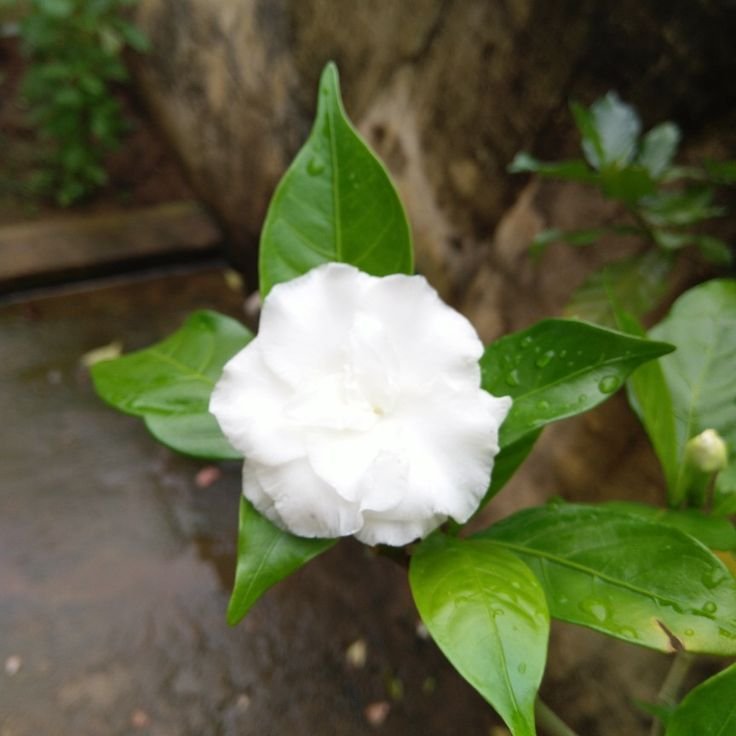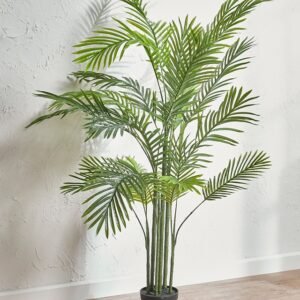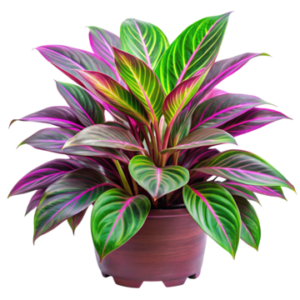Description
Nandivardhana (Mudda) Plant
The Nandivardhana plant, also known in various regions as “Mudda”, is a fragrant, ornamental shrub that holds deep cultural, ecological, and medicinal importance in South and Southeast Asia. Though the name Nandivardhana is often associated with sacred or mythological references, the plant commonly referred to by this name in vernacular contexts is generally understood to be Tabernaemontana divaricata, a species from the Apocynaceae family. It is widely appreciated for its evergreen foliage and its striking, pinwheel-shaped white flowers that release a gentle fragrance, especially at night.
1. Botanical Classification and Morphology
- Scientific Name: Tabernaemontana divaricata
- Common Names: Crape Jasmine, East Indian Rosebay, Pinwheel Flower
- Regional Names: Nandivardhana (Sanskrit), Nandyavarta (Hindi), Nandiarvattam (Tamil), Nandi Battalu (Telugu), Nandibattalu / Mudda (Kannada)
- Family: Apocynaceae (Oleander family)
This plant is an evergreen shrub or small tree that can reach up to 5–6 feet in height, though in ideal conditions, it may grow even taller. Its leaves are glossy, dark green, and oblong, measuring around 10–15 cm in length. The most defining feature is its flowers, which are usually white, occasionally with a double-layered petal arrangement that gives a “rose-like” or “pinwheel” appearance.
2. Flower and Fragrance
The flowers of Nandivardhana are one of its most admired features. They bloom profusely, often throughout the year in warm climates, with peak flowering during spring and monsoon seasons. The flowers do not have a strong overpowering smell but rather emit a mild, sweet fragrance, especially noticeable during early mornings or evenings.
There are both single and double-petal varieties, with the double-petal (or “duplex”) form being more ornamental and commonly planted in gardens. The flower structure makes it an excellent addition to aesthetic landscaping designs.
3. Habitat and Cultivation
Nandivardhana is native to India, Sri Lanka, and Southeast Asia, but it is now grown widely across tropical and subtropical regions globally. It thrives in well-drained soil, under full sunlight or partial shade. The plant is hardy, drought-tolerant, and relatively low-maintenance, making it ideal for urban landscaping, home gardens, and public parks.
- Soil: Prefers loamy, well-drained soil
- Light: Full sun to partial shade
- Watering: Moderate; avoid waterlogging
- Propagation: Through cuttings, layering, or seeds
4. Cultural and Religious Significance
The Nandivardhana plant holds special religious and cultural importance, particularly in Hinduism. The name “Nandivardhana” itself can be translated as “one that enhances joy or bliss,” a quality associated with purity and devotion.
- Used in Poojas: The flowers are often used in offerings to Hindu deities, especially Lord Shiva, Vishnu, and Lakshmi. The white color symbolizes purity and peace.
- Associated with Rituals: It is commonly used in religious festivals, temple garlands, and home altars.
- Vaastu and Feng Shui: In Indian Vaastu Shastra, planting this flower in the northeastern direction is considered auspicious, believed to bring positive energy and prosperity.
5. Medicinal and Traditional Uses
In Ayurvedic and traditional medicine systems, various parts of the Nandivardhana plant are used to treat ailments. While care must be taken as some parts may be mildly toxic if misused, they are considered beneficial under proper guidance.
- Roots and Bark: Used in decoctions to treat fever, indigestion, and pain
- Leaves: Applied externally for skin diseases and wounds
- Latex: The plant exudes a milky sap which is sometimes used for treating ulcers and snake bites
- Flowers: Have cooling and soothing properties; used in aromatic therapies
Note: Always consult a qualified Ayurvedic or medical practitioner before using any plant for medicinal purposes.
6. Ecological Value and Landscaping Uses
Nandivardhana serves as more than just a decorative plant; it plays a role in urban ecology:
- Air Purification: Like many green plants, it contributes to oxygen generation and reduces dust and air pollutants.
- Butterfly and Bee Friendly: The flowers attract pollinators like bees, butterflies, and sometimes hummingbirds, making it a valuable plant for ecological gardens.
- Hedges and Borders: Due to its dense foliage and moderate height, it is often used as a natural hedge or privacy screen in residential landscapes.
7. Varieties and Hybrids
There are several cultivated varieties of Tabernaemontana divaricata (Nandivardhana), including:
- Single-flowered type – Simpler flower, often used in traditional rituals
- Double-flowered type (Duplex) – More decorative, ideal for ornamental gardens
- Dwarf hybrids – Created for use in small pots, bonsai, or terrace gardens
8. Symbolism
The flower of Nandivardhana symbolizes purity, devotion, and eternal love. Its evergreen nature and unceasing blooming cycle represent resilience and endurance—traits that are admired in spiritual and philosophical traditions.
In many parts of India, people grow this plant not just for its beauty but as a spiritual offering to signify ongoing reverence to the divine.
9. Care Tips
If you’re looking to grow the Nandivardhana (Mudda) plant at home, here are a few key tips:
- Avoid overwatering: Though tolerant, soggy soil can lead to root rot.
- Prune regularly: Helps shape the plant and promotes flowering.
- Fertilize monthly: A mild organic fertilizer or compost boosts growth and flowering.
- Pest control: Occasionally affected by mealybugs or aphids; use neem oil or insecticidal soap if needed.
10. Conclusion
The Nandivardhana (Mudda) plant is a perfect blend of beauty, tradition, and utility. With its snow-white, fragrant blossoms and rich cultural heritage, it serves not only as an ornamental delight but also as a spiritually and ecologically meaningful addition to any garden or space. Whether admired for its simple elegance or used in daily rituals and healing practices, this plant continues to inspire reverence and joy across generations.
Its ease of maintenance and year-round blooms make it a favorite for novice and experienced gardeners alike. Whether grown in a pot, as part of a flowering hedge, or as a centerpiece in a traditional Indian courtyard, the Nandivardhana plant is a timeless symbol of grace and harmony with nature.







Reviews
There are no reviews yet.